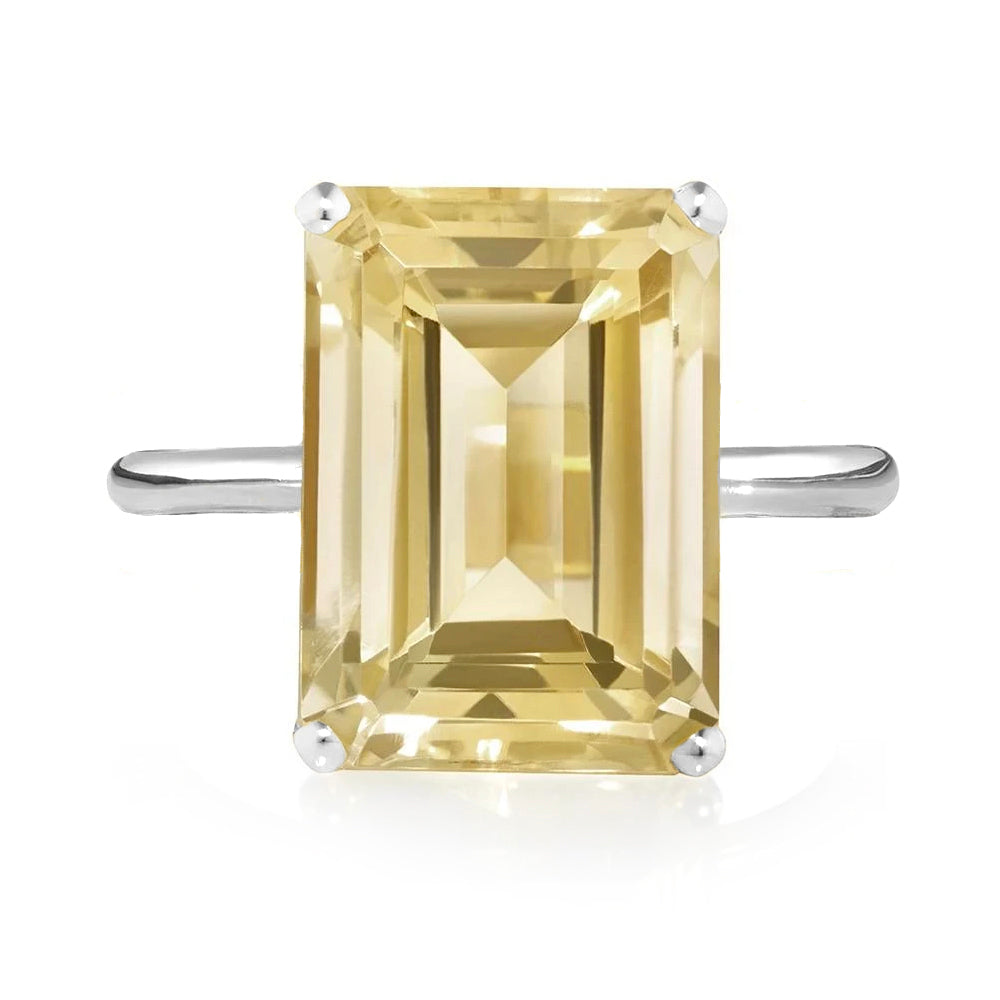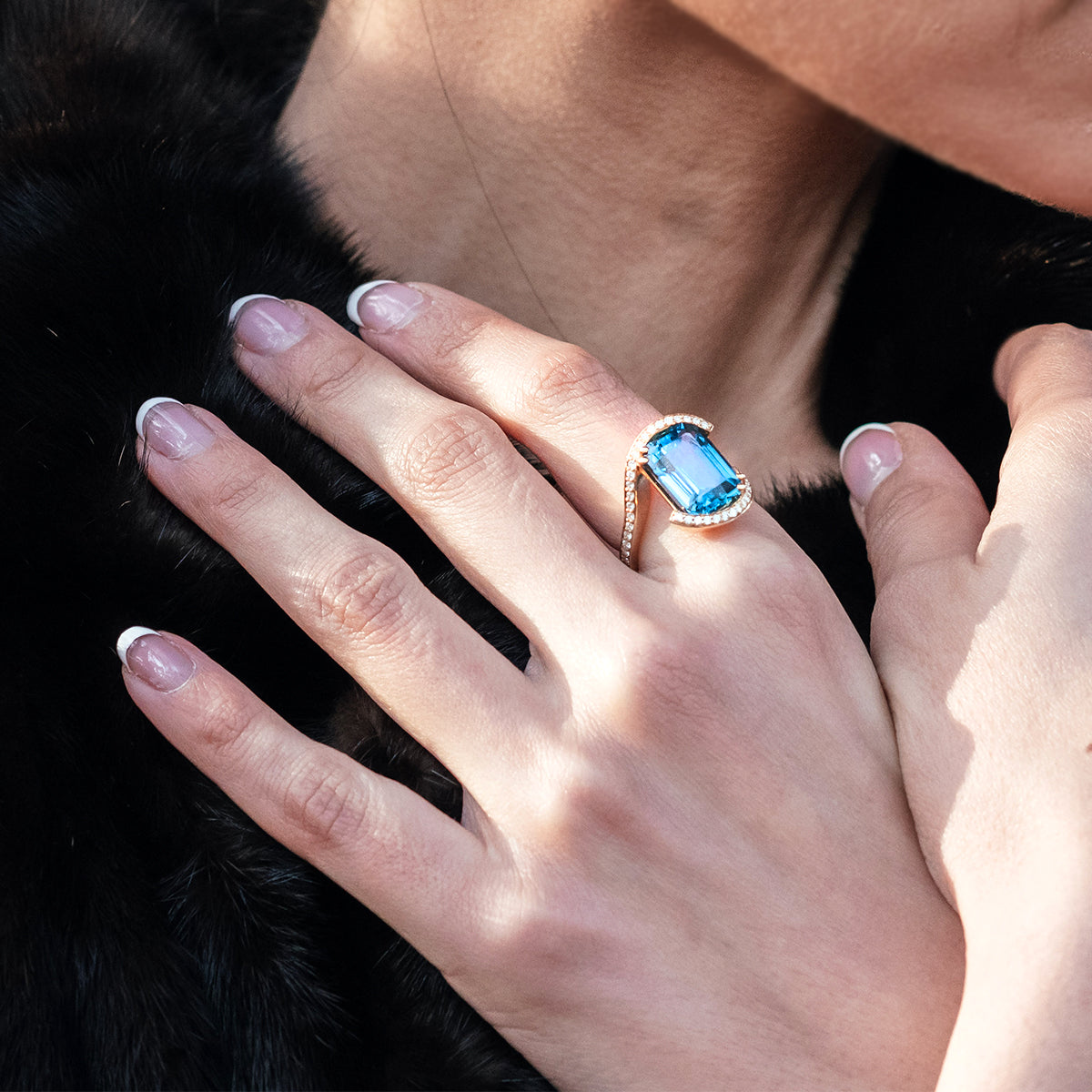
Citrine Overview
Citrine is a transparent, yellow variety of quartz, and its name comes from the old French word 'Citron' which means lemon. Its warm colour is said to be a gift from the sun, and the golden gemstone is considered to bring brightness into the wearers life. It is also said to spark imagination and encourage fresh beginnings and prosperity.
Citrine Birthstone
Citrine is the birthstone of November and is associated with strength and healing for both the body and the mind. Those with the Citrine birthstone are fair-minded, friendly, they exhibit a flexible nature, but have great mental strength.
Citrine Hardness
Citrine rates a 7 on the MOHs (mineral of hardness scale); this means that it is suitable for all jewellery types. Abrupt temperature changes can cause citrine to fracture and some citrine colour can fade with prolonged exposure to intense light. Citrine can also be damaged by hydrofluoric acid, ammonium fluoride, and alkaline solutions. Ultrasonic cleaners are usually safe when cleaning the stone however not when the stone is dyed or treated by fracture filling.
Citrine History
In the 1600s, a Spanish conquistador first discovered large deposits of Citrine, as well as Amethysts, in a Bolivian mine known as "Anahi". This mine was lost for three centuries after this and had then been rediscovered in the 1960s and quickly became the most important source of natural, unheated Citrine.
Citrine has been found in ancient Egyptian archaeological sites because it was made into talismans by the ancient Egyptians to ward off spirits. The gemstone was also popular in ancient Greece, during the Hellenistic age, and the ancient Greeks preferred to use Citrine as a decorative gem, instead of using it as jewellery.
Citrine had become most popular during the Art Deco movement which began in France in the 1910s, and then was spread over across Europe and the United States, and had ended in 1930 - just before World War 2. The Art Deco period is characterised by luxury and elaborate designs, where inexpensive man-made materials such as plastics were mixed with natural materials like gold. The Art Deco era saw a renewed appreciation for Citrine, where the jewel was then used to make pendants, earrings and necklaces and they became must-have jewellery pieces for the trendy.
Citrine Origins
The majority of modern day Citrine comes from Brazil; this rare orange-red citrine is mined at the Linha Estefania mine, in the Brazilian state of Rio Grande de Sol. This mine was discovered in the 1960s - In these tunnels, Citrine crystals are found in open pockets of rocks. Natural Citrine can be found in the Ural mountains of Russia, France and Madagascar. These stones are formed by the gradual heating of Amethyst, under high temperatures, in the Earth's crust. This process causes the iron impurities within the amethyst to change colour from purple to yellow, resulting in the creation of natural Citrine.
Citrine Types
Palmeira Citrine

Palmeira Citrine refers to the vibrant orange tones obtained by heat-treating amethyst from Brazil's Palmeira mine. This stone has a strong ability to dissipate anger and negative energy while promoting happiness, relaxation and calmness.
Fire Citrine

The Fire Citrine is a deep red-orange colour and has been part of the gem kingdom for centuries and is a member of the quartz family. The vibrant energy of the stone boosts confidence and motivation, empowering you to chase your dreams fearlessly.
Lemon Quartz
Lemon Quartz's have a lighter shade than other dark yellow or slightly brownish Citrines. This stone is always mistaken for yellow sapphires because of their similar colour. Wearing a lemon quartz clears the mind of anxiety and also improves the ability of decision making.
Citrine Meaning
Citrine is often referred to as the 'Merchants Stone' as it is believed to carry the power of the sun, bringing energy, creativity and clarity to the wearer. This stone is known to have an instant effect on the health and wealth of your body, mind and soul. Natural citrine is so bright and blessed that it is unable to hold onto bad energy. Citrine is connected to the solar plexus and sacral chakra; these are elements that help us to stay grounded and glorious in our own power. The solar plexus chakra helps you stand strong in your personal power as well as encouraging confidence. The sacral chakra stimulates joy and therefore brings passion, creativity and intimacy into your life.
Famous Citrines
One of the most famous Citrines is known as 'The Malaga', which is the largest citrine stone weighing over 20,200 carats. In June 2010, this discovery was added to the "Special Exhibition Gems" section of Art Natura in Spain, a natural science museum featuring one of the worlds most extensive collections of coloured gemstones.
Another famous citrine is known as the 18 carat citrine necklace from Robert Procop's "Style of Jolie" which was donated and designed by Angelina Jolie Pitt to the Smithsonian Museums National Gem Collection.
Citrines at Augustine Jewels

Birthstone Halo Earrings - Citrine, £650, Citrine Jewellery Collection

Sterling Silver Citrine Ring, £330, Citrine Jewellery Collection

Sterling Silver Citrine Necklace, £95, Citrine Jewellery Collection

Sterling Silver Citrine Bracelet, £75, Citrine Jewellery Collection
Top 5 Facts about Citrine
1. Fake Citrine is very common = Natural Citrine is very rare and therefore fake citrine is made by heating amethyst - which creates a burnt orange/brown colour
2. Citrine used in jewellery is most likely heat treated = This is done to achieve a attractive yellow colour
3. Citrine is often associated with goddesses - Demeter and Sekhmet = This is due to Citrines sunny but intense shade; Demeter is the Greek goddess of harvest and Sekhmet is an Egyptian war goddess linked with power
4. The 'Citron' vs 'Citrina' debate = There is a ongoing debate about whether Citrine comes from the French word 'Citron' which means lemon or the Latin word 'Citrina' which means yellow.
5. Wealth and prosperity = Citrine is known to promote good fortune and therefore shopkeepers keep this gem near their cash registers in order to maximise profits






